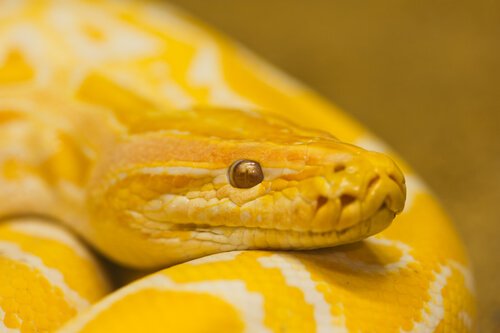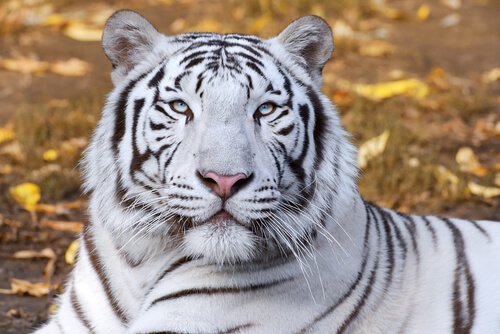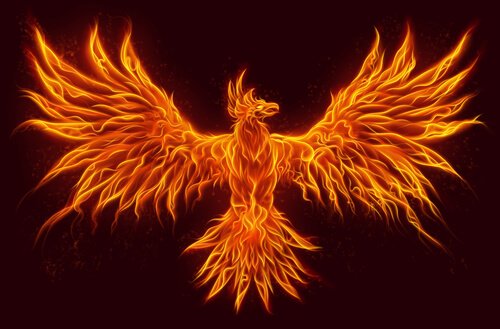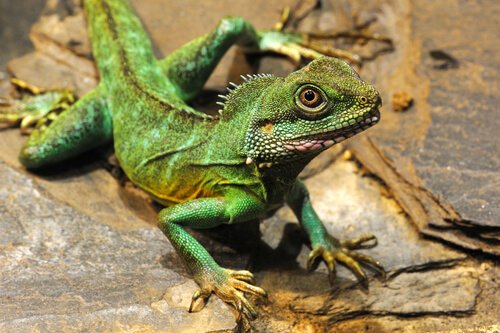Animals Used In Feng Shui

This millenarian philosophical system from Chinese origin that’s based on the harmony of different spaces, and how they influence certain aspects of people’s lives. In this article, you can read about the animals used in Feng Shui, and how they can help protect households.
What do animals represent in Feng Shui?
This “mysterious practice” is about feeling and experiencing things you can’t see. According to Feng Shui, the arrangement of furniture, household items, or the use of certain colors can all make a difference in a home. Animals or artifacts of animals are also very important in Feng Shui, especially those that protect the house.
1. Black turtle
This animal represents water, the north, solidity, protection, and stability in the home. This animal — in the picture above — uses its strong shell to block danger or adversities.
Also, the slow pace and leisurely walk of this chelonian reduces stress levels and conflicts within the family. It’s said that black turtle protects the house from high-speed winds, torrents of water and other disasters. The best place for a turtle decoration is by having its back to the door, window or hallway.
2. Yellow snake
This animal is associated with the center and the earth, which makes them a very important animal in Feng Shui. Snakes are very receptive and sensitive reptiles that pay attention to their entire surroundings. They are constantly aware of what’s happening inside the home and prevent any conflicts from occurring.

You can place a yellow snake artifact almost anywhere inside your home. However, the best place to put one would be near a door to prevent any danger from entering.
3. White tiger
The white tiger represents the west, metal, strength, courage, and power. The usual location to place a white tiger is on the righthand side of the yellow snake, either inside a closet, on a building or on a mound of garden soil.

The white tiger inspires reflection and thought, which is great for rooms that are intended for decision making. Some experts in Feng Shui place a white tiger artifact near a sofa to provide the home with rest and good energy (Qi).
4. Red Phoenix
The last two animals in Feng Shui are mythological creatures. The first one is the Phoenix, that’s associated with fire and the south. It’s placed in the opposite direction of the turtle, which means that is should be seen on the facades of houses and buildings.

This mythological bird receives energy from the outside and keeps any negative energy from getting in. It’s best not to place them in front of a tree because they can reduce your field of vision. A red phoenix is a good decoration for a coffee table inside of a living room.
5. Green dragon
Last, this is another mythical creature — that’s often compared to iguanas — and is associated with wood and the east. It’s one of the most famous symbols of Chinese art and culture. You can see them in almost every Chinese festival and celebration.

As an animal protector, the dragon represents the mountains and water. You can place a dragon on the lefthand side of the yellow snake and on the right of the white tiger. These animals are great for putting in a closet, at the entrance of the house, or on a table. It helps increase intuition and improve your non-rational side.
Some other animals that are part of Feng Shui are bats, cats, Fu dogs, owls, elephants, and rhinoceros.
This millenarian philosophical system from Chinese origin that’s based on the harmony of different spaces, and how they influence certain aspects of people’s lives. In this article, you can read about the animals used in Feng Shui, and how they can help protect households.
What do animals represent in Feng Shui?
This “mysterious practice” is about feeling and experiencing things you can’t see. According to Feng Shui, the arrangement of furniture, household items, or the use of certain colors can all make a difference in a home. Animals or artifacts of animals are also very important in Feng Shui, especially those that protect the house.
1. Black turtle
This animal represents water, the north, solidity, protection, and stability in the home. This animal — in the picture above — uses its strong shell to block danger or adversities.
Also, the slow pace and leisurely walk of this chelonian reduces stress levels and conflicts within the family. It’s said that black turtle protects the house from high-speed winds, torrents of water and other disasters. The best place for a turtle decoration is by having its back to the door, window or hallway.
2. Yellow snake
This animal is associated with the center and the earth, which makes them a very important animal in Feng Shui. Snakes are very receptive and sensitive reptiles that pay attention to their entire surroundings. They are constantly aware of what’s happening inside the home and prevent any conflicts from occurring.

You can place a yellow snake artifact almost anywhere inside your home. However, the best place to put one would be near a door to prevent any danger from entering.
3. White tiger
The white tiger represents the west, metal, strength, courage, and power. The usual location to place a white tiger is on the righthand side of the yellow snake, either inside a closet, on a building or on a mound of garden soil.

The white tiger inspires reflection and thought, which is great for rooms that are intended for decision making. Some experts in Feng Shui place a white tiger artifact near a sofa to provide the home with rest and good energy (Qi).
4. Red Phoenix
The last two animals in Feng Shui are mythological creatures. The first one is the Phoenix, that’s associated with fire and the south. It’s placed in the opposite direction of the turtle, which means that is should be seen on the facades of houses and buildings.

This mythological bird receives energy from the outside and keeps any negative energy from getting in. It’s best not to place them in front of a tree because they can reduce your field of vision. A red phoenix is a good decoration for a coffee table inside of a living room.
5. Green dragon
Last, this is another mythical creature — that’s often compared to iguanas — and is associated with wood and the east. It’s one of the most famous symbols of Chinese art and culture. You can see them in almost every Chinese festival and celebration.

As an animal protector, the dragon represents the mountains and water. You can place a dragon on the lefthand side of the yellow snake and on the right of the white tiger. These animals are great for putting in a closet, at the entrance of the house, or on a table. It helps increase intuition and improve your non-rational side.
Some other animals that are part of Feng Shui are bats, cats, Fu dogs, owls, elephants, and rhinoceros.
This text is provided for informational purposes only and does not replace consultation with a professional. If in doubt, consult your specialist.








